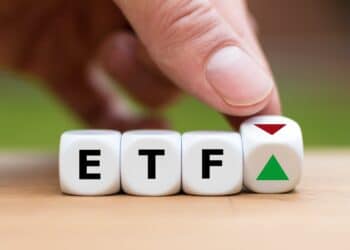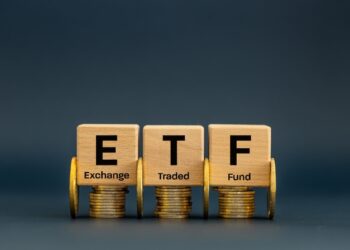A decade ago, when the Australian exchange traded fund (ETF) market was in its infancy, if you had told the average investor it was possible to purchase a product that provides exposure to a diversified portfolio of, say, 1,000 global shares via the Australian Securities Exchange (ASX) in a single trade, they may have been sceptical.
Fast forward to current times and investors of all types have flocked to investment vehicles that allow you to do just that, and more!
Today, ETFs in Australia are gathering assets at record pace.
As of February this year, the 228 exchange traded products that trade on the ASX have a combined $36.9 billion in funds under management, up 41 per cent from a year earlier.
At this pace, we forecast that the industry could reach $40 to 45 billion by year end.
One of the latest developments in the Australian ETF market – which adds a new contributor to the growth of the industry– are active ETFs.
What is an Active ETF?
They are products that allow investors and their advisers to easily access the capabilities of professional active investment managers via a simple trade on the ASX.
Unlike regular ETFs, which are passively managed, these products typically seek to outperform the market or achieve another objective that does not involve tracking an index.
They are legally structured in exactly the same way as unlisted traditional managed funds but provide live intra-day pricing and liquidity.
Unlike traditional managed funds, however, active ETFs can be bought and sold like any share, which provides administrative ease and flexibility as they can be monitored and reported on alongside the rest of a share or ETF portfolio.
Also, as they are traded in this way, there is no paperwork required to invest beyond a brokerage account and no minimum investment levied by the fund issuer.
While still in its infancy, active ETFs have now reached $1.8 billion in funds under management in February, approximately double the amount invested the year before. We expect further robust growth driven by continued investor demand and new product supply as it becomes available on the ASX.
Active managers in rush to launch Active ETFs
Since the first active ETF was launched in April, 2015, a number of active managers have entered this growing market.
We are currently seeing two models emerging, with some managers deciding to invest in the infrastructure to launch active ETF products on their own, and others teaming up with specialists in exchange traded funds, like BetaShares, to create active ETF products.
The most recent active ETF launch was in February, as BetaShares and Legg Mason jointly launched the latest two additions to this segment of the market: the BetaShares Legg Mason Equity Income Fund (managed fund) (ASX: EINC) and the BetaShares Legg Mason Real Income Fund (managed fund) (ASX: RINC).
Other active managers like AMP Capital have also partnered with our company to launch active ETFs.
The active vs passive debate
So, with the growth in new entrants, are active ETFs set to overtake their passive counterparts in terms of inflows?
In our view, there’s room in the market for both.
Financial advisers have for many years combined active and passive investments to create the optimal portfolios for their clients.
In the past, this may well have been via unlisted index funds and traditional managed funds.
Now, with more and more advisers seeking out the benefits of the exchange-traded environment, and given the innovation and development of the ETF industry, such blended portfolios can now easily be created via passive ETFs and active ETFs – all via the ASX.
The mix of active and passive, as well as the underlying strategies chosen, remain the decision of the adviser.
In this regard, the real innovation here is the exchange traded structure itself rather than whether it applies a passive or active investment strategy.
Put simply, exchange traded funds offer advisers ease-of-access, efficiency and flexibility that just isn’t possible outside of an exchange traded structure.
ETF usage among financial advisers & the unmet advice need
Financial advisers have been one of the core drivers behind Australia’s rapidly-growing ETF sector, with 45 per cent of advisers currently recommending ETFs to their clients and a further 14 per cent identified as ‘next wave’ users, according to the Investment Trends Exchange Traded Funds Report 2017.
The Report also indicated that intentions around inflows remain strong. Of financial advisers who currently invest in ETFs, 17 per cent of client inflows are invested in ETFs, with the number expected to rise to 20 per cent of all client inflows by 2020.
But while the number and overall percentage of financial advisers using ETFs is rising, the number of ETF investors who do not use an adviser continues to be very high.
As the chart below illustrates, the latest numbers indicate that of Australian ETF investors, only 23 per cent had the involvement of a financial adviser in their most recent ETF investment.
Does this mean that most ETF investors are destined to invest in these products without advisers?
Not necessarily – markedly the Report also found that there is a strong unmet advice need amongst ETF investors, with one of the most cited reasons of those investors who have an interest in ETFs but have not yet decided to invest being ‘lack of knowledge about ETFs’.
Given the strong continued growth of ETFs and the introduction of new product types such as active ETFs adding more choice to the market, it seems there is a great opportunity for financial advisers to fill an ‘advice gap’.
With continued investor demand for ETFs and new product development, savvy advisers will be able to position themselves as ‘ETF specialists’ to attract a new range of clients who need help understanding, researching and evaluating ETFs – whether Active ETFs or ETFs more generally.
Ilan Israelstam is head of strategy at BetaShares.





